Acupressure
Acupressure is an ancient healing art that’s based on the traditional Chinese medicine practice of acupuncture.
With acupressure, you put pressure on specific places on your body. These places are called acupoints. Pressing these points can help release muscle tension and promote blood circulation.
Acupressure practitioners use their Fingers, Palms, Elbows or Feet, or special devices to apply pressure to acupoints on the body’s meridians. Sometimes, Acupressure also involves Stretching or Acupressure massage, as well as other methods.
What are the basic principles of acupressure?
Acupressure involves working with different types of finger movements on different acupoints, to increase or disperse [pressure] at different points on the patient’s body throughout the session .
It is meant to aid the body stimulate and activate its own healing energies.
It can be used by someone suffering from headaches, migraines, joint pain, body pain, stiffness, anxiety, stress and acidity or another form of a digestive issue.
What is acupressure used for?
There are hundreds of acupressure points on the body, corresponding to other parts of the body. (For example, there’s a point on your hand for your kidney.) So, naturally, the practice has many associated benefits. As with any form of massage, a huge perk of acupressure is relaxation, one that you can get behind even if you doubt the existence of meridians. Acupressure is often used for pain relief, and studies have suggested it may help fight back pain, menstrual cramps, and headaches. The practice is used for many other purposes that have been studied less, including immune system and digestion support.

Hand pressure points
Reflexologists may use the following hand pressure points:
Lung meridian
Located towards the edge of the palm, the lung meridian runs from the tip of the thumb down to just past the crease in the wrist.
According to reflexologists, rubbing any sore spot along this line can help relieve symptoms associated with a cold, including sneezing, chills, and a sore throat.
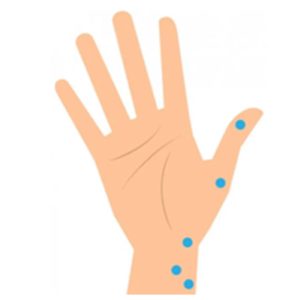
Heart 7
A person can find the heart 7 point on the wrist, just on the outside of a small bone that is in line with the little finger. The traditional name for this point translates to “Spirit Gate.”
People who support the use of pressure points believe that applying pressure to heart 7 will prevent:
- Insomnia
- Anxiety
- Depression
- Heart diseases
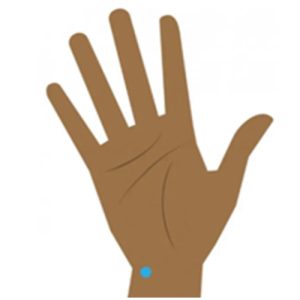
Inner gate point
The inner gate point is not directly on the hand. To find it, place the hand palm up and use three fingers to measure roughly an inch down the wrist.
The inner gate point is here, approximately in the center of the wrist.
Practitioners recommend using the thumb of the other hand to firmly massage this pressure point to relieve nausea and stomach pain. It may also help other digestive problems.
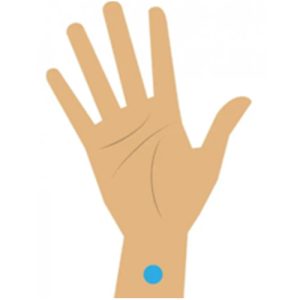
Hand valley point
A person can find the hand valley point between the first finger and the thumb.
Practitioners claim that applying firm pressure to the hand valley point can reduce stress, stop migraines, and stop pain in the:
- shoulders
- teeth
- neck
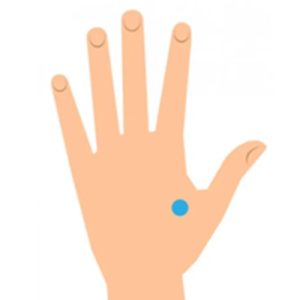
Outer gate point
The outer gate point is almost parallel to the inner gate point on the top side of the hand and arm, between two tendons.
Proponents say that applying pressure here boosts a person’s energy and bolsters the immune system.
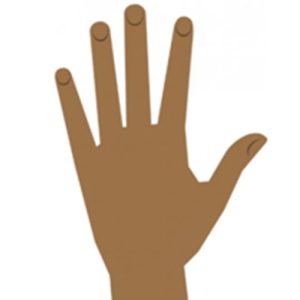
Base of thumb point
A person can locate the base of thumb point by tracing a finger down the palm side of the thumb until they reach the wrist crease.
Reflexologists believe that applying gentle pressure to this point may help alleviate breathing issues and respiratory problems.
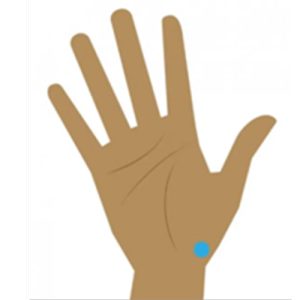
Small intestine 3
The small intestine 3 point is on the side of the hand just below the little finger and above one of the hand’s large creases.
Some people claim that applying firm pressure to this point can help relieve earaches, headaches in the back of the head, and neck pain.
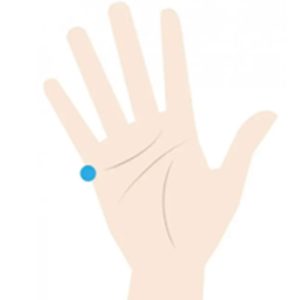
Ten dispersions
The tips of each finger are home to these ten pressure points.
Applying pressure or using acupuncture on these points could help relieve some common flu symptoms, such as a high fever or a sore throat.
Some practitioners also believe that applying pressure can help treat a coma or epilepsy.
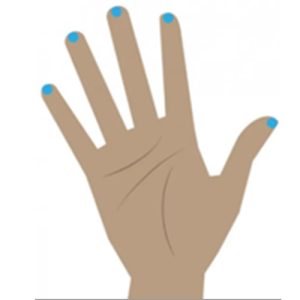
Four seams
A person can find the four seams on the inside of each of the large joints in the index finger, middle finger, ring finger, and little finger.
Proponents of acupressure believe that these points can help treat digestive problems, especially in children.
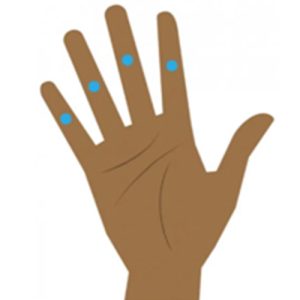
Do pressure points work?
There are enough peer-reviewed studies on pressure points and their healing effects to establish that they are useful. Most evidence comes from research on traditional medicine and anecdotal results.
A person curious to try acupressure or reflexology can do so safely. There are virtually no side effects from applying pressure to these areas except for localized temporary pain.
People who have previously had blood clots or have risk factors for blood clots should speak to their doctor before receiving acupressure or massage.


